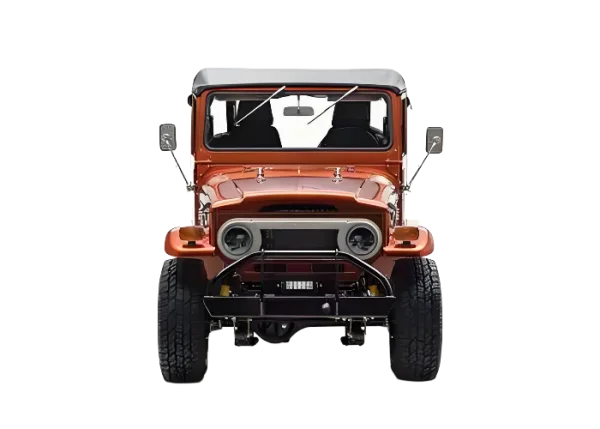
To improve how well truck body parts fit together, you need tools like accurate jigs, laser guides, and digital helpers. These cut mistakes and make parts line up just right. Problems like materials stretching from heat or varying in quality can be fixed with standard, modular designs, lean building tricks, and machines (like robot welders or CNC cutters). Checking quality as you go, using things like in-line checks and statistical process control (SPC), keeps everything consistent. Training workers well and using smart IoT systems also bump up efficiency. Tairui, for example, uses modular designs and teams up with suppliers to handle custom orders while keeping output high. They also care about green practices, like cutting waste and saving energy.
How Can You Enhance Assembly Accuracy in Truck Body Parts Manufacturing?
Accuracy is super important when making truck body parts. Whether you’re building a corrugated truck box or fitting pieces like A/B-pillars, tiny mistakes can lead to big issues. These could mean weaker parts, safety problems, or expensive do-overs. So, how do you get everything to fit perfectly from the start?
What Are the Common Challenges in Assembly Precision?
One big challenge is keeping parts precise across different vehicle types. For example, currently applicable to Foton vehicle models, it is used for the assembly of the A/B-pillar parts of the vehicle body and is a core component of the front-frame structure of the cockpit and passenger compartment. These parts need to fit smoothly in setups like light buses or MPVs. This variety makes things tough.

Heat making parts expand, human slip-ups, and uneven material quality also throw off alignment.
Why Do Tolerances and Fit Matter So Much in Structural Components?
Tolerances decide how much size difference is okay for parts. When assembling structural pieces like cargo boxes or chassis mounts, even small slip-ups can cause weak spots or wobbly parts that hurt durability. Similar products have similar needs in light buses, MPVs, and other vehicle models, and have certain versatility and expansion application space. This proves how crucial it is to keep things the same across products.
What Techniques Help Improve Assembly Alignment?
Some tools and tricks make lining up parts easier and more spot-on.
How Do Precision Jigs and Fixtures Minimize Errors During Assembly?
Accurate jigs and fixtures work like trusty guides. They hold parts in the exact spot for welding or bolting. This takes away guesswork and makes every batch match. They also make tasks simpler, so workers don’t get tired.
How Do Digital Measurement Tools Like Laser Guidance Systems Improve Accuracy?
Laser guides project lines onto surfaces. These help workers tweak parts right away. They’re really useful for big truck body parts like panels, where measuring by hand can miss the mark.
What Solutions Does Tairui Offer for High-Precision Assemblies?
If you want a partner who’s great at modular truck body parts and has awesome accuracy, Tairui is a solid pick. They’ve got tons of experience building swappable units, like plug-in truck boxes and refrigerator truck bodies. They focus on sturdy designs using digital tools and standard connectors. Tairui breaks vehicle bodies into separate pieces (like cabs, cargo boxes, or chassis) for fast assembly with standard interfaces. This handles custom needs for different vehicle models.
How Can You Streamline Production Processes for Greater Efficiency?
Getting parts to fit right is awesome, but you need a smooth production line to avoid holdups. To crank up output, you need to shake up how things work.
Where Do Bottlenecks Typically Occur in Traditional Manufacturing Lines?
Manual welding spots, slow part-moving systems, or awkward part-grabbing setups often cause waits. These slow down work, raise worker costs, and stretch out delivery times.
How Can Lean Manufacturing Principles Be Applied to Truck Body Part Production?
Lean tricks help make building truck body parts quicker and easier.
Why Is Just-in-Time (JIT) Inventory Management Important for Reducing Waste?
JIT brings parts to the line only when you need them. This keeps storage costs down and stops you from using old parts. It’s key for custom truck body parts like plug-in truck boxes or cargo fence stake truck boxes.
How Does Value Stream Mapping Help Optimize Workflow?
Value stream mapping sketches out every step from raw materials to finished truck body parts. It spots wasteful steps, like extra moving or waiting, so you can cut them out one by one.
What Role Does Automation Play in Boosting Output Without Sacrificing Quality?
Machines speed up work and keep quality solid.
In What Ways Do Robotic Welding and Automated Material Handling Improve Consistency?
Robot welders make even welds fast and skip human mistakes. Automated conveyors move heavy panels, like those for corrugated truck boxes, to stations on time, reducing delays.
Why Is CNC Machining Ideal for Producing Complex Parts With Tight Tolerances?
CNC machines are perfect for crafting tricky shapes with super-precise fits. They’re great for key joints or brackets in modular truck body parts.
How Should You Approach Material Selection and Standardization Strategies?
Choosing the right materials affects how well parts work and how easy they are to make. Keeping things consistent across products is just as big a deal.
What Materials Offer an Optimal Balance Between Strength and Weight?
High-strength steel gives strong support without adding too much weight. Composites fight rust and lighten things up, perfect for refrigerated units or custom roof panels.
Why Is Standardization Across Product Lines Key to Reducing Variability?
Using the same mounting points or panel sizes lets you use the same tools for lots of products. This saves time setting up machines and makes inventory simpler.
Which Quality Control Practices Support Both Accuracy and Productivity?
Checking quality isn’t just about catching errors—it’s about stopping them without slowing things down.
Should You Rely More on In-line Inspection Than End-of-Line Testing?
In-line checks spot issues as they happen, not after everything’s built. This lets you fix problems early, saving time and cash before more work piles on.
How Can Statistical Process Control (SPC) Help Detect Deviations Early?
SPC uses real-time sensor data to check if processes are steady. If something, like weld depth, starts to slip, you can fix it before it turns into a mess.
What Role Does Digital Twin Technology Play in Predictive Maintenance Planning?
Digital twins create a virtual version of your system. They show wear or issues over time, so you can plan maintenance based on actual use, not just fixed schedules.
Why Is Workforce Training Essential for Maintaining High Standards?
Even with machines, skilled workers are super important, especially for custom orders or final checks.
How Does Skilled Labor Impact Assembly Speed And Accuracy Directly?
Trained workers catch alignment issues fast and fix them quickly. This helps a lot with varied setups, like modular door units or swappable roof panels.
Why Should You Cross-Train Operators Across Multiple Workstations?
Cross-training lets workers jump between tasks during busy times or if someone’s out. This keeps the line running smoothly, a big part of lean manufacturing cells.
What Is Tairui’s Approach to Operator Certification Programs?
Tairui’s Corrugated Truck Box line has clear training plans. They certify workers for jobs from simple assembly to digital checks, ensuring steady quality no matter who’s working.
How Can Smart Manufacturing Systems Drive Continuous Improvement Initiatives?
Using data to make choices turns quick fixes into smart plans that keep getting better.
What Benefits Come From Real-Time Data Collection From Equipment Sensors?
Live tracking warns you if things like bolt tightness or curing heat go off track. This stops big mistakes before they grow.
Why Use MES Platforms To Monitor Performance Metrics Across Shifts And Batches?
Manufacturing Execution Systems (MES) collect key numbers like cycle time, defect rates, and OEE (Overall Equipment Effectiveness). They give clear insights for everyone, from floor workers to big bosses.
How Are IoT Sensors Used To Monitor Part Quality Automatically Throughout Production Cycles?
IoT sensors in jigs track stuff like vibration, clamp force, or heat cycles. They send info to MES platforms to predict tool wear or material problems.
Can You Offer Customization Without Compromising Efficiency Levels?
Yes, but only if your design plan starts with modularity.
How Do You Balance Custom Orders With Mass Production Requirements Using Modular Design Principles?
Instead of redoing whole assemblies for each order, you swap pre-made units like cab types or roof heights to match customer needs. This keeps most of the process the same. Tairui splits vehicle bodies into separate units (like cabs, cargo boxes, or chassis) for quick assembly with standard interfaces. This keeps production fast.
Why Is Supplier Collaboration Critical To Maintaining Steady Component Flow?
Production halts if parts show up late or not at all because of bad supplier teamwork.
How Does Supplier Integration Improve Scheduling Accuracy And Inventory Planning?
By sharing plans through ERP systems tied to Tier-1 suppliers’ platforms, Tairui makes sure parts arrive right when needed. This avoids shortages or overfilled warehouses that waste money.
How Can Sustainability Be Embedded Into High-Output Environments Naturally?
Efficiency isn’t just about speed—it’s about using less and helping the environment.
What Steps Help Reduce Waste From Offcuts Or Overproduction?
Smart cutting plans for sheet metal cut down on scraps a ton. JIT logistics also stops extra inventory that might get tossed after design updates.
Why Choose Energy-Efficient Equipment In Fabrication Lines?
Modern laser cutters use less power per cut than old plasma systems. They also make cleaner edges, skipping extra steps like grinding that waste energy and time.
FAQ
Q1: What are some examples of modular components used in customizable truck body parts?
A: Examples include swappable roof panels, door units, plug-in cargo boxes, and refrigerator units. All use standard mounting points for quick setup across different vehicle models.
Q2: How does automation improve both quality control and throughput simultaneously?
A: Machines handle repetitive tasks like welding evenly. They also use sensors to check part quality right away, cutting rework without slowing things down.
Q3: Why is it important to implement digital twin technology in truck body manufacturing?
A: Digital twins let you test wear or process problems virtually. This helps plan maintenance to avoid surprise stops.
